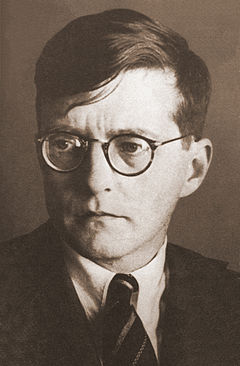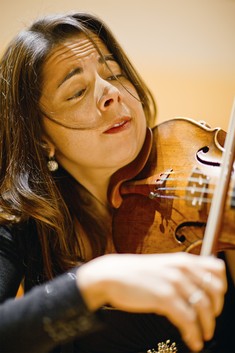By Stephen Brookes • The Washington Post • March 3, 2013
T Dmitri Shostakovichhere are so many terrific young string quartets around these days that it’s hard to leave the house without tripping over one. But the Indiana-based Pacifica Quartet has been garnering particular praise lately for its performances of the complete quartets of Beethoven, Shostakovich and Elliott Carter, so perhaps it wasn’t surprising that the Kreeger Museum was packed Saturday night with alert and slightly quivering ears, eager to hear what these intriguing players could do.
Dmitri Shostakovichhere are so many terrific young string quartets around these days that it’s hard to leave the house without tripping over one. But the Indiana-based Pacifica Quartet has been garnering particular praise lately for its performances of the complete quartets of Beethoven, Shostakovich and Elliott Carter, so perhaps it wasn’t surprising that the Kreeger Museum was packed Saturday night with alert and slightly quivering ears, eager to hear what these intriguing players could do.
The evening opened (as quartet recitals seem to do now, with mind-meld regularity) with Haydn. It was a good choice. The Quartet in B-flat, Op. 76, No. 4, is one of those classically ideal works that marries subtle emotional depths with flawless construction, laced through with that sly, mischievous wit that makes Haydn so irresistible. The Pacifica gave it a fine if rather measured reading — more tea-and-crumpets than edge-of-seat excitement — that displayed its superb technique and thoughtful phrasing, but didn’t exactly unleash pandemonium. Simin GanaraBut the next work was another story. Shostakovich’s searing String Quartet No. 2 in A, Op. 68, was written in 1944, and is steeped not only in Jewish traditional music but also in the composer’s anguish over the Jewish wartime tragedy. It’s a dense, gripping work, with constantly interweaving currents of disquiet, optimism, despair and determination, and the Pacifica gave it a profoundly moving reading, with lead violinist Simin Ganatra a particular standout.
Simin GanaraBut the next work was another story. Shostakovich’s searing String Quartet No. 2 in A, Op. 68, was written in 1944, and is steeped not only in Jewish traditional music but also in the composer’s anguish over the Jewish wartime tragedy. It’s a dense, gripping work, with constantly interweaving currents of disquiet, optimism, despair and determination, and the Pacifica gave it a profoundly moving reading, with lead violinist Simin Ganatra a particular standout.
Maurice Ravel’s Quartet in F must be one of the most beguiling quartets in the entire repertoire — it seems to blow weightlessly through the imagination, like an avalanche of butterflies. It sounds best when utterly effortless, though, and if you were a quibbling sort of person you might have asked for more delicacy in the Pacifica’s reading. But these are full-bodied players, and they showed that, for all its elegant luminosity and subtle washes of color, real blood flows in the veins of Ravel’s masterpiece; by the end, it had become a deeply satisfying performance in every way.